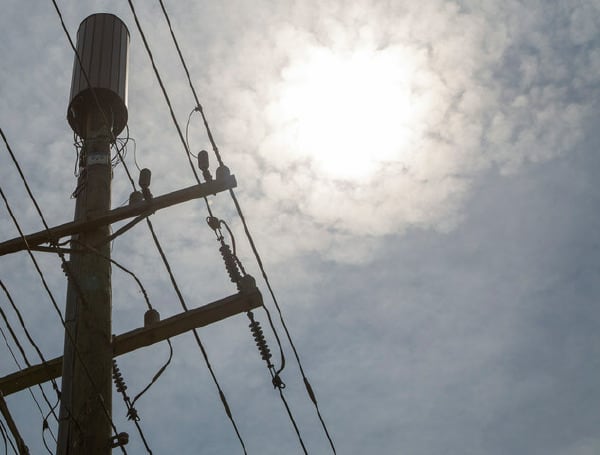Source: TFP File Photo. By Nick Pope Residents of blue states with aggressive climate policies are paying significantly more for electricity and f
Residents of blue states with aggressive climate policies are paying significantly more for electricity and fuel than red states, according to a new report by the American Legislative Exchange Council (ALEC).
California, Massachusetts, Rhode Island, Connecticut, Vermont, New York and New Jersey are seven of the top eight continental states in terms of highest average retail electricity prices in 2023, according to ALEC’s report. Each of these states have some sort of green energy mandate, which the ALEC report refers to as a Renewable Portfolio Standard (RPS), or participates in a greenhouse gas cap-and-trade program, or both.
“As Americans continue facing risks to their energy needs, recent government policies implemented in the name of political agendas ignore the real-life realities Americans face as a consequence,” ALEC’s Energy, Environment and Agriculture Task Force Manager Joe Trotter said of the report and its findings.
Read: Dem Fundraising Platform ActBlue Is Processing Donations For A Bail Fund For Illegal Immigrants
Red states like Idaho, Wyoming, Utah, Oklahoma, North Dakota and Louisiana are leaders in electricity affordability in 2023, according to ALEC’s analysis. Unlike the blue states with the least affordable electricity in the lower 48 states, none of these states have their own green energy mandates or participate in cap-and-trade schemes, which the ALEC report calls regional greenhouse gas initiatives (RGGI).
A cap-and-trade program is when a government sets a maximum limit, or “cap,” on emissions, and then issues pollution permits to market participants, according to Cornell University’s Legal Information Institute. Those participants can then trade permits with each other, giving the system a market-based feel as an approach to countering climate change. However, cap-and-trade systems tend to make oil, coal and natural gas more expensive, driving up costs and reducing the number of jobs available, according to the Institute for Energy Research.
“In the 48 contiguous states, the 16 with the highest electricity prices all have an RPS in place, as do 18 of the highest-priced 20 states. Similarly, with the exception of Virginia, each of the states in the RGGI or another cap-and-trade program is within the 15 states with the highest prices of electricity,” the report states.
The differences in electricity costs are stark, with the costs of a kilowatt hour in California, Massachusetts, Rhode Island and Connecticut more than doubling the costs of the same unit in states like Idaho, Wyoming, Utah and Oklahoma, according to ALEC’s analysis.
The data tells a similar story for gas prices as well. Normal gas prices are considerably cheaper in states like Mississippi, Arkansas, Oklahoma and Missouri, where average prices are about $3.15 per gallon or less, than in states like California, Washington, Oregon and Illinois, where average prices range from about $3.80 per gallon to $4.85 per gallon, according to ALEC’s analysis.
Read: Why Is Former South Carolina Gov. Nikki Haley Courting Wall Street Ahead Of 2024?
“Gasoline costs have an enormous impact on consumers, so state legislators need to be cognizant of how their state’s laws and policies impact their constituents,” the report asserts. “States with more stringent fuel content requirements, more regulations, and above-average taxes generally have higher gas prices than those that do not.”
The ALEC report also assesses diesel fuel costs, an important economic factor because of its ubiquitous use in trucking and transporting goods.
The report found that “in general, states that are not hostile to fossil fuel manufacturers and have larger agricultural sectors tend to have lower diesel prices… In areas of the country with higher prices, such as the West Coast and Northeast, shipping prices, as well as the eventual consumer cost, will rise compared to areas with lower diesel prices. Additionally, shipping companies could rationally decide not to serve areas where fuel prices are particularly high, limiting the supply of over-the-road shipping.”
Android Users, Click To Download The Free Press App And Never Miss A Story. Follow Us On Facebook and Twitter. Signup for our free newsletter.
We can’t do this without your help; visit our GiveSendGo page and donate any dollar amount; every penny helps

